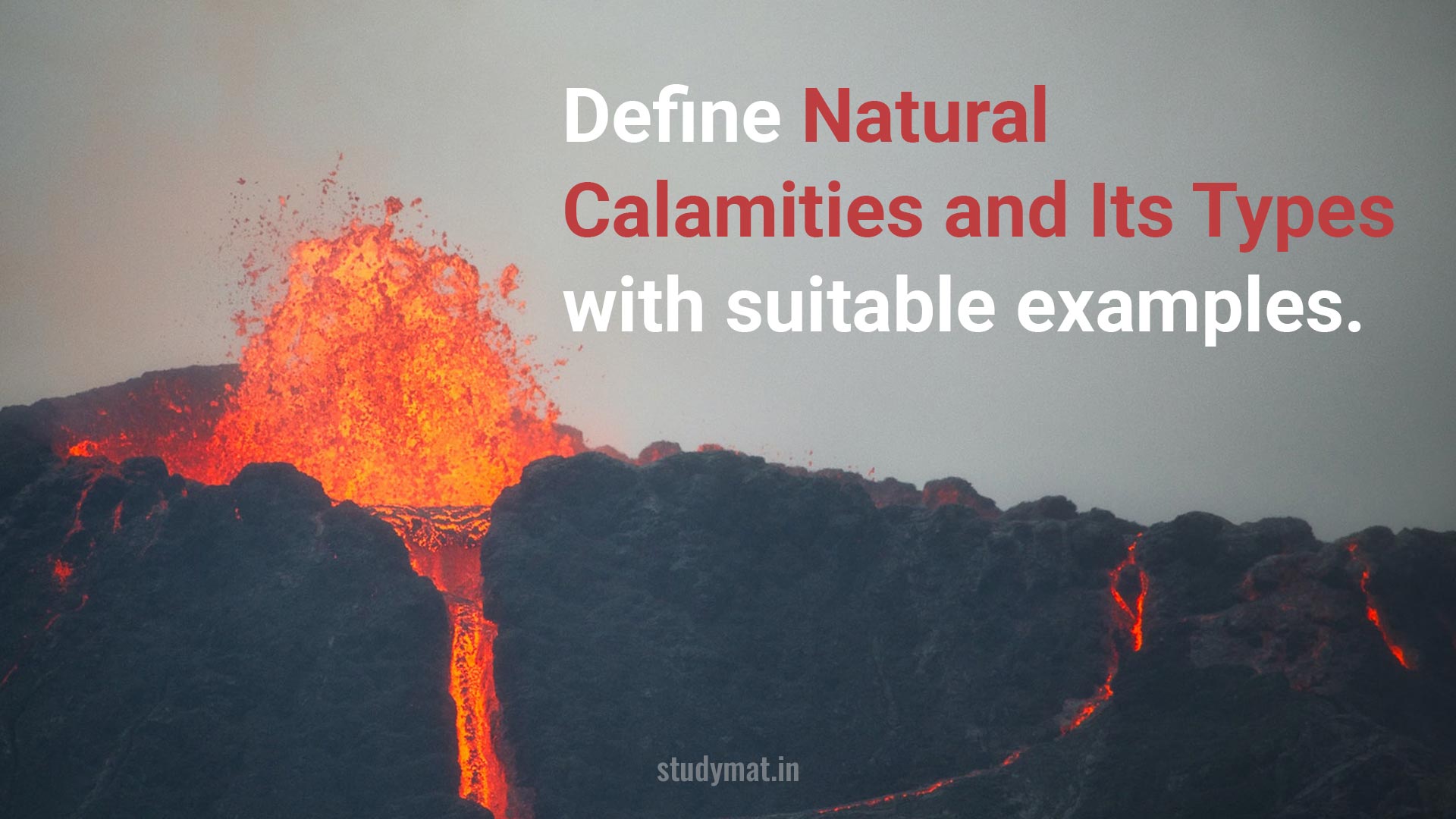In this article, we will Define Natural Calamities and Its Types with suitable examples.
What are Natural Calamities?
Natural Calamities, also known as natural disasters, are events or phenomena that occur in nature and can cause significant damage, destruction, and disruption to human lives, property, and the environment. These events are often unpredictable and are not caused by human activities.
Types of Natural Calamities:
1. Atmospheric Calamities:
These are disasters related to the Earth’s atmosphere and weather conditions.
- Hurricanes or Cyclones: These are powerful storms with strong winds and heavy rainfall. They can cause extensive damage to coastal areas, leading to flooding and destruction of buildings and infrastructure.
- Tornadoes: These are rapidly rotating columns of air that can create a funnel-shaped cloud. Tornadoes are known for their destructive winds, capable of causing severe damage to everything in their path.
2. Hydrological Calamities:
These disasters are associated with water and the Earth’s hydrological cycle.
- Floods: Excessive rainfall, river overflow, or dam failures can result in floods. Floods can submerge large areas, damaging homes, crops, and infrastructure, and can cause loss of life.
- Droughts: Droughts occur when there is an extended period of significantly reduced rainfall, leading to water scarcity. Droughts can result in crop failure, livestock loss, and water shortages, impacting agriculture and communities.
Read Also:
Explain the following term Public Health.
How does the Environment Influence Human Health? Explain it in detail with suitable examples.
3. Geological Calamities:
These calamities are related to the Earth’s structure, including the crust, tectonic plates, and geological processes.
- Earthquakes: Earthquakes occur when there is a sudden release of energy in the Earth’s crust, causing the ground to shake. Earthquakes can cause buildings to collapse, landslides, and tsunamis if they occur near bodies of water.
- Volcanic Eruptions: Volcanic eruptions involve the release of molten rock, gases, and ash from volcanoes. They can cause ashfall, pyroclastic flows, and lava flows, which can lead to the destruction of surrounding areas.
4. Biological Calamities:
These disasters are associated with living organisms and can have impacts on human health and ecosystems.
- Epidemics/Pandemics: The rapid spread of infectious diseases among a population can lead to epidemics or pandemics. Examples include outbreaks of diseases like influenza, Ebola, or COVID-19, which can cause widespread illness, death, and strain on healthcare systems.
- Insect Infestations: Large-scale infestations of insects, such as locust swarms or bark beetles, can have severe consequences for agriculture, forests, and ecosystems, leading to crop losses and ecological imbalances.
These are just a few examples of natural calamities in different categories. Each type of calamity has its own characteristics and can pose significant challenges and risks to human lives, infrastructure, and the environment. Understanding these types can help in preparedness, mitigation, and response efforts to minimize the impact of such disasters.
FAQ:
- What are the different types of natural disasters? Give two examples of each.
- What is a natural calamity?
- What refers to natural calamities?
- Discuss types of natural disasters with explanation.
- What are the causes of natural disasters?
Follow Us:
If you like this article, you can Follow us on Facebook.
Also, you can Join our Official Facebook Group for QnA Sessions and Discussions with the worldwide IGNOU community.

